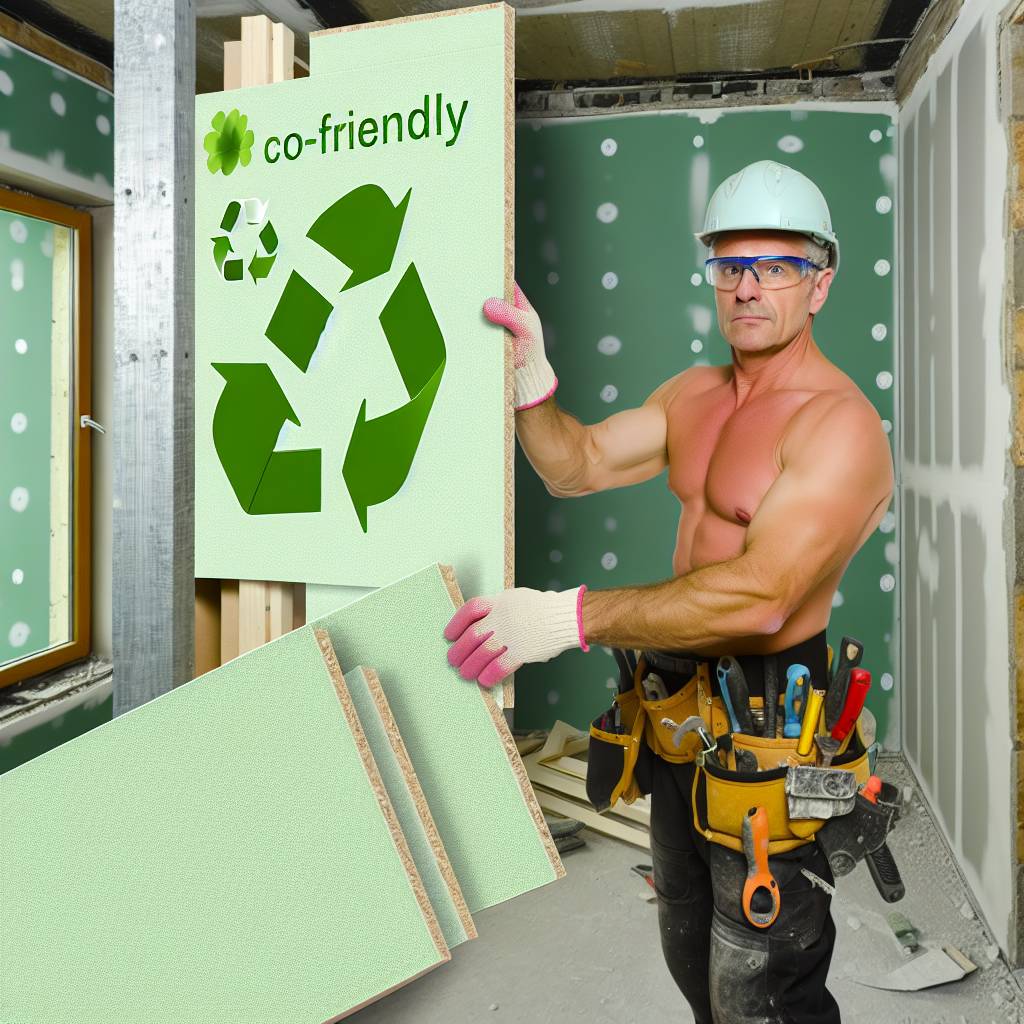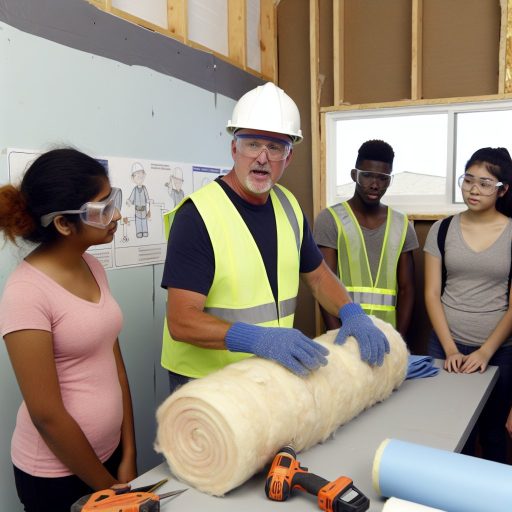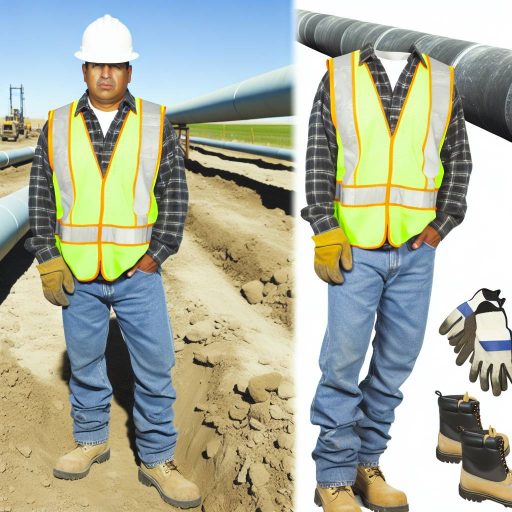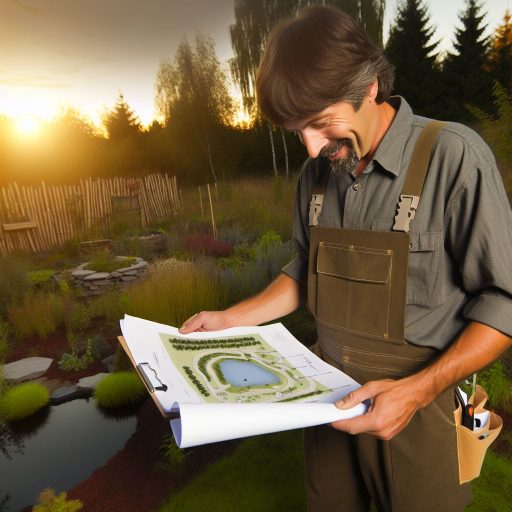Introduction
Green building focuses on environmentally responsible practices to minimize the impact on the planet.
Eco-friendly drywall options play a crucial role in reducing carbon footprint and promoting sustainability.
This blog post aims to explore various eco-friendly drywall options that can enhance green building efforts.
Definition of Green Building
Green building refers to the design and construction of sustainable, energy-efficient, and environmentally friendly buildings.
Importance of Eco-Friendly Drywall Options
Eco-friendly drywall options help reduce energy consumption, improve indoor air quality, and minimize waste generation.
By using sustainable materials in construction, eco-friendly drywall contributes to a healthier environment.
Purpose of the Blog Post
The purpose of this blog post is to shed light on eco-friendly drywall options that align with green building principles.
Readers will learn about innovative and sustainable drywall choices that can make a positive impact.
Traditional drywall vs. eco-friendly drywall
When it comes to building or renovating your home, choosing the right materials is crucial for both the environment and your own health.
Traditional drywall has long been the standard in construction, but as eco-friendly options become more readily available, it’s worth exploring the differences between the two.
Differences in materials used
Traditional drywall is typically made from gypsum plaster that is sandwiched between two layers of paper.
While gypsum is a natural material, the manufacturing process often involves high energy consumption and the release of harmful greenhouse gases.
On the other hand, eco-friendly drywall options are made from recycled or sustainable materials such as natural fibers, clay, or even by-products from other industries.
These materials have a lower carbon footprint and are less harmful to the environment.
Environmental impact
The production of traditional drywall contributes to deforestation, air pollution, and water contamination due to the extraction of raw materials and the manufacturing process.
Moreover, the disposal of traditional drywall can be problematic as it takes up space in landfills and releases toxins when it breaks down.
In contrast, eco-friendly drywall options are more sustainable as they minimize waste, reduce energy consumption, and promote the use of renewable resources.
Energy efficiency and insulation benefits
One of the key advantages of eco-friendly drywall is its superior energy efficiency and insulation properties.
With traditional drywall, heat loss or gain can be a significant issue, leading to higher energy bills and a less comfortable living environment.
Eco-friendly drywall, on the other hand, offers better thermal performance, helping to regulate indoor temperatures and reduce the need for artificial heating or cooling.
Transform Your Career Today
Unlock a personalized career strategy that drives real results. Get tailored advice and a roadmap designed just for you.
Start NowThis not only saves money on energy costs but also reduces the overall carbon footprint of your home.
Types of Eco-Friendly Drywall Options
When it comes to constructing buildings with sustainability in mind, choosing eco-friendly drywall options can make a significant impact on the environment.
Here are some types of eco-friendly drywall options that are gaining popularity:
Recycled Drywall
Recycled drywall is made from post-consumer recycled content, reducing the need for new materials.
This type of drywall helps divert waste from landfills and promotes a circular economy.
Low-VOC Drywall
Low-VOC drywall is manufactured without volatile organic compounds, which can emit harmful gases into the air.
By choosing low-VOC drywall, indoor air quality can be improved, creating a healthier living or working environment.
Paperless Drywall
Paperless drywall is an eco-friendly alternative to traditional drywall that eliminates the need for paper facing.
This reduces waste during production and installation while also preventing mold growth in humid environments.
Hempcrete
Hempcrete is a sustainable building material made from hemp fibers, lime, and water.
It offers excellent thermal insulation properties, regulates humidity levels, and sequesters carbon dioxide from the atmosphere.
Hempcrete is lightweight, mold-resistant, fireproof, and biodegradable, making it an attractive option for eco-conscious builders.
By incorporating these eco-friendly drywall options into building projects, not only can energy efficiency and indoor air quality be improved, but also a positive impact can be made on the environment by reducing carbon footprint and promoting sustainability.
See Related Content: Pest Control Work: Legal and Ethical Issues
Benefits of using eco-friendly drywall
When it comes to green building, choosing eco-friendly drywall can have a significant impact on the environment and your overall well-being.
Let’s dive into the benefits of using such materials:
- Reduced carbon footprint
- Improved indoor air quality
- Long-term cost savings
Reduced carbon footprint
Eco-friendly drywall is typically made from recycled materials, reducing the need for new resources and lowering carbon emissions during production.
Improved indoor air quality
Conventional drywall can release harmful chemicals into the air over time, impacting indoor air quality.
Eco-friendly options are free from these toxic compounds, promoting a healthier living environment.
Showcase Your Business Today
Reach thousands of readers actively exploring professional services. Publish your business profile and grow your audience now.
Publish NowLong-term cost savings
While eco-friendly drywall may have a slightly higher upfront cost, it can lead to long-term savings.
These materials are more durable and resistant to mold and moisture, reducing the need for replacements and repairs.
By choosing eco-friendly drywall for your next construction or renovation project, you can contribute to a more sustainable future while enjoying the immediate benefits of better indoor air quality and cost savings.
You Might Also Like: Tips for Effective Communication with Clients
Installing Eco-Friendly Drywall
When installing eco-friendly drywall, it is important to consider proper techniques to ensure its effectiveness and longevity.
Proper Installation Techniques
- Choose the right type of eco-friendly drywall based on your specific needs and preferences.
- Ensure that the drywall is properly cut and measured to fit the space without gaps or overlaps.
- Use environmentally friendly adhesives and sealants to secure the drywall in place.
- Follow manufacturer instructions carefully to guarantee successful installation.
Maintenance Tips for Longevity
- Regularly inspect the drywall for any signs of damage, such as cracks, dents, or water stains.
- Clean the drywall with non-toxic cleaners and avoid using harsh chemicals that can degrade the material.
- Repair any damage promptly to prevent further deterioration and ensure the integrity of the drywall.
- Maintain proper indoor humidity levels to prevent mold and mildew growth on the drywall.
Sustainable Disposal Options
- Consider recycling old drywall instead of sending it to a landfill to reduce waste and environmental impact.
- Look for local recycling facilities that accept drywall and follow their guidelines for disposal.
- Consult with professionals to safely remove and dispose of eco-friendly drywall to minimize harm to the environment.
- Explore alternative disposal methods, such as repurposing old drywall for other construction projects or landscaping use.
By following these installation, maintenance, and disposal tips, you can enjoy the benefits of eco-friendly drywall while minimizing your environmental footprint.
See Related Content: Top Skills Every Successful Miner Must Have

LEED-certified buildings
LEED, or Leadership in Energy and Environmental Design, is a widely recognized green building certification program.
Many LEED-certified buildings use eco-friendly drywall options to minimize the environmental impact of construction and reduce energy consumption.
For example, the Bullitt Center in Seattle, Washington, is a net-zero energy commercial office building that features recycled drywall and other sustainable materials.
Sustainable construction practices
When it comes to sustainable construction practices, choosing eco-friendly drywall options can make a significant difference.
For instance, using drywall made from recycled materials or low-VOC (volatile organic compound) content can improve indoor air quality and reduce environmental impact.
The Edge, a sustainable office building in Amsterdam, is an excellent example of how sustainable construction practices, including the use of eco-friendly drywall, can contribute to a healthier environment.
Positive impact on the environment and occupants
Green building projects that incorporate eco-friendly drywall options not only benefit the environment but also provide a healthier and more comfortable indoor environment for occupants.
For example, drywall products made from recycled gypsum reduce the need for extraction of virgin materials and minimize waste generation.
Additionally, eco-friendly drywall with low-VOC content improves indoor air quality and creates a more sustainable living or working space.
See Related Content: Understanding the Different Types of Roofing Materials
Challenges and Limitations of Eco-Friendly Drywall
When it comes to eco-friendly drywall options, there are certain challenges and limitations that need to be considered before making the switch.
These challenges can range from initial cost concerns to the availability of materials and lack of awareness and education about eco-friendly alternatives.
Initial Cost
One of the main challenges of opting for eco-friendly drywall is the initial cost.
Traditional drywall is often cheaper upfront, while eco-friendly options may have a higher price tag.
However, it’s important to consider the long-term benefits and cost savings that come with eco-friendly materials.
Availability of Materials
Another challenge is the availability of eco-friendly drywall materials.
Not all suppliers may carry these options, making it harder for consumers to access and purchase them.
This limited availability can be a barrier for those looking to make more sustainable choices for their construction projects.
Lack of Awareness and Education
There is also a lack of awareness and education about eco-friendly drywall options.
Many consumers may not be familiar with the benefits of these materials or may not know how to properly source and install them.
Without proper education and awareness, the adoption of eco-friendly drywall may be slower than desired.
Overall, while there are challenges and limitations associated with eco-friendly drywall, it’s important to consider the environmental impact and long-term benefits of choosing sustainable options.
With increased awareness, availability, and education, eco-friendly drywall can become a more viable and popular choice for eco-conscious consumers and builders alike.
Eco-Friendly Drywall Options for Sustainable Building
Choosing eco-friendly drywall options is crucial for creating sustainable buildings and reducing our environmental impact.
It is essential to consider the materials used in construction to promote healthier indoor air quality and lower energy consumption.
By opting for green building practices, individuals and businesses can contribute to a more sustainable future for the planet.
Recap of the Importance of Eco-Friendly Drywall Options
Eco-friendly drywall options help in reducing waste, conserving resources, and promoting a healthier living and working environment.
They also contribute to lower energy costs and reduce the carbon footprint of buildings, making them more environmentally friendly.
Call to Action for Individuals and Businesses to Choose Green Building Practices
We urge everyone to prioritize eco-friendly drywall options when constructing, renovating, or upgrading their buildings.
By making conscious choices, we can collectively make a positive impact on the environment and create a more sustainable world.
Future Outlook for Sustainable Construction Industry
As awareness grows and technology advances, the sustainable construction industry is expected to expand further.
Innovations in eco-friendly materials and practices will continue to shape the future of building design and construction.
Additional Resources
Careers in Green Construction : U.S. Bureau of Labor Statistics
Showcase Your Business Today
Reach thousands of readers actively exploring professional services. Publish your business profile and grow your audience now.
Publish NowSustainable Management of Construction and Demolition Materials …
[E-Books for Sale]
The Big Book of 500 High-Paying Jobs in America: Unlock Your Earning Potential
$19.99 • 500 High-Paying Jobs • 330 pages
Explore 500 high-paying jobs in America and learn how to boost your career, earn more, and achieve success!
See All 500 High-Paying Jobs of this E-Book
1001 Professions Without a Degree: High-Paying American Jobs You Can Start Now
$19.99 • 1001 Professions Without a Degree • 174 pages
Discover 1001 high-paying jobs without a degree! Unlock career tips, skills, and success strategies for just $19.99!




